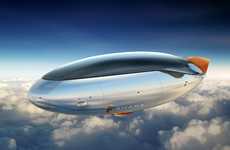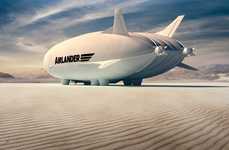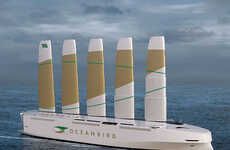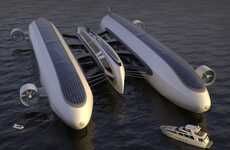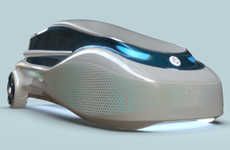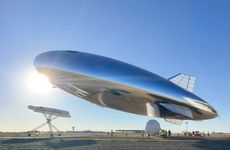
The Vincent Callebaut Hydrogenase is 100% Self-Sufficient
Meghan Young — May 12, 2010 — Autos
References: vincentllebaut.org & thedesignblog.org
The Vincent Callebaut Hydrogenase would be cool enough just to look at, yet the fact that it is 100% self-sufficient thanks to seaweed makes it even more impressive. These environmentally-friendly airships offers a unique mode of transportation that would emit zero carbon emissions.
Clearly inspired by nature just looking at it, the Vincent Callebaut Hydrogenase is capable of flying an average height of 2,000 meters as well as carrying up to 200 tons of freight at 175 km/h. Perhaps we’ll see these green blimps in 2030.
Clearly inspired by nature just looking at it, the Vincent Callebaut Hydrogenase is capable of flying an average height of 2,000 meters as well as carrying up to 200 tons of freight at 175 km/h. Perhaps we’ll see these green blimps in 2030.
Trend Themes
1. Seaweed-powered Transportation - The use of seaweed as a clean and renewable source of energy for transportation will disrupt the traditional fossil fuel industry.
2. Self-sufficient Airships - The development of self-sufficient airships will create new possibilities for environmentally-friendly transportation, logistics, and delivery services.
3. Nature-inspired Design - The trend of using biomimicry and natural design elements in transportation concepts will lead to innovative and aesthetically pleasing vehicles.
Industry Implications
1. Transportation - The transportation industry will need to adapt to the shift towards clean and renewable energy sources such as seaweed.
2. Logistics - The logistics industry can benefit from the use of self-sufficient airships for efficient and eco-friendly delivery services.
3. Renewable Energy - The renewable energy industry may see an opportunity in the production and supply of seaweed-based fuels for transportation.
4.7
Score
Popularity
Activity
Freshness



